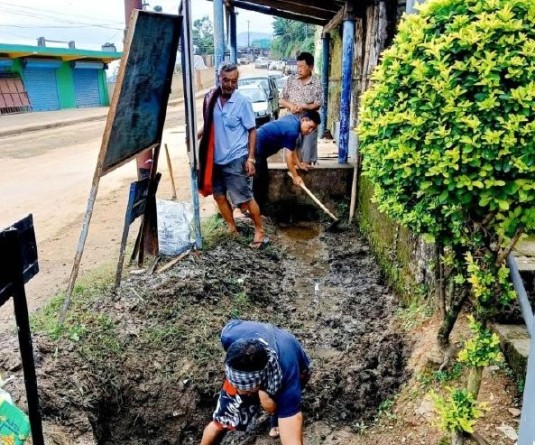
Benthungo Kithan
Entrepreneur
The 2025-26 Nagaland Budget maintains financial stability and introduces governance improvements, but it lacks a Bold Economic Strategy required to transition from “Dependency” to “Self-Reliance”. While efforts have been made to enhance revenue generation and sectoral allocations, the state remains trapped in a grant-dependent fiscal model, failing to capitalize on its economic potential.
To reduce fiscal deficits and build a sustainable economy, the government must shift from an Expenditure-Driven Model to an Investment-Driven Model—focusing on Entrepreneurship, Industry, Tourism, and Technology-Led Governance.
Additionally, the budget highlights the absence of Strategic Economic Planning, Advisory Input, and Data-Driven decision-making—elements critical for long-term growth.
Fiscal Overview: Dependency Continues to Dominate
The budget estimates a total expenditure of Rs 24,849 crore, with a projected deficit of Rs 843.21 crore. Despite efforts to maintain fiscal discipline, the persistent revenue deficit underscores Nagaland’s over-reliance on central grants, a long-standing concern. The limited internal revenue generation demands stronger measures to enhance state earnings.
Key Highlights: Where the Budget Gets It Right
- Addressing Power Revenue Losses through Smart Prepaid Meters: A critical challenge for the state has been the financial drain in the power sector due to inefficiencies and revenue losses. The introduction of smart prepaid meters is a step in the right direction, ensuring better billing efficiency and reduced revenue pilferage. However, without investments in power generation and tariff rationalization, the sector will continue to be a burden on the state exchequer.
- Strengthening Urban Infrastructure: The Rs 17.41 crore allocation for urban development and ₹25.86 crore for housing will improve living standards. However, without an economic focus, infrastructure projects risk becoming financial liabilities rather than growth catalysts. Infrastructure spending must be strategically linked to economic development by promoting: Real estate investments; Business hubs and commercial spaces; Revenue generation through lease models and municipal taxes
3. Administrative Reforms & Digital Initiatives
The launch of the Nagaland e-Proposal System (NePS) is a welcome move to speed up government approvals and enhance transparency. The introduction of:
- A research wing for tax collection and evasion analysis
- RFID posts for e-way bill compliance, will improve revenue efficiency and better tax compliance. Given that the state’s own revenue collection for just 13% of total revenue, fully enforcing these mechanisms is crucial to strengthening long-term fiscal sustainability and reducing dependency on Central Grants.
Where the Budget Falls Short: Missed Opportunities for Revenue Growth
1. Lack of a Strong Private Sector Push
- Entrepreneurship and Industry are not at the center of the State’s Economic Strategy.
- No major allocation for MSME incentives or private investment attraction.
- The long-pending Nagaland Industrial Policy remains a bottleneck to economic growth.
- Oil exploration—a major untapped opportunity—remains neglected. With rich hydrocarbon reserves, a well-regulated and sustainable extraction policy could unlock substantial revenue, create jobs, and reduce dependence on central grants.
2. Tourism Sector Overlooked
Despite immense potential in Eco-Tourism, Heritage Tourism, and Adventure Tourism, the budget fails to prioritize tourism as a revenue-generating industry. A Structured Tourism Investment Policy should include: Tax holidays for private investors; Infrastructure development for high-end tourism; Aggressive National and Global Marketing Campaigns
3. Agriculture & Rural Economy Largely Ignored
Agriculture is the backbone of Nagaland’s rural economy, yet:
- No major investment in Agri-Business, Food Processing, or Export-Oriented Farming Models.
- The state should establish Agri-Export Zones to attract private players for: Cold storage facilities; Processing units; Market linkages
The absence of a Rural Industrialization Strategy means Nagaland’s Agri-based Economy remains underutilized.
4. No Clear Monetization Plan for Government Assets
The budget remains expenditure-driven rather than investment-driven. The government owns large tracts of land, buildings, and public infrastructure, but there is no structured plan to monetize these assets through: Leasing models; Commercial partnerships; Build-Operate-Transfer (BOT) arrangements
What Could Have Been Done Differently?
1. Push for a Stronger Industrial & MSME Policy
- Tax incentives and Subsidies for local entrepreneurs in Manufacturing, Logistics, and Agro-processing.
- MSME industrial clusters with Shared Infrastructure (warehousing, processing units, training centers).
2. Make Tourism a Core Economic Pillar
- Public-private partnerships (PPP) for high-value tourism projects.
- Tax breaks and land incentives for hotel, resort, and adventure tourism investors.
- Global marketing campaigns to promote Nagaland’s rich cultural heritage.
3. Power Sector Monetization & Renewable Energy Investments
- Attract private investment in solar and hydro power projects.
- Offer Power Purchase Agreements (PPAs) to industries for stable revenue streams.
4. Digitization of Business & Trade Licenses
- Implement for a Fully Digital Platform for Business Registrations, Permits, and Trade licenses.
- Increase tax compliance, Reduce Bureaucracy, and bring businesses into the formal economy.
Final Assessment: Balanced budget, but not bold enough for growth
The 2025-26 budget ensures financial stability, but fails to create a clear roadmap for economic self-reliance. The continued reliance on central grants and weak internal revenue generation indicate that Nagaland must undergo structural reforms.
Nagaland must urgently break free from its chronic dependence on central grants and adopt a mindset of self-reliance. As India moves forward with the vision of Atmanirbhar Bharat (Self-Reliant India), it is alarming that Nagaland still operates with a 'beggar mentality', relying heavily on central assistance instead of building robust internal revenue-generation mechanisms.
While financial support from the Centre is crucial for infrastructure and strategic development, the over-reliance on handouts has stifled economic innovation and self-sufficiency.
Unlocking Nagaland’s Potential
Nagaland has immense untapped opportunities in:
- Tourism
- Agriculture
- Entrepreneurship
- Oil Exploration
Instead of distributing subsidies that create artificial growth, the government should empower local industries, enhance ease of doing business, and attract private investment. Additionally, fiscal discipline must be prioritized by curbing wasteful expenditure and improving governance transparency. As India advances towards Self-Reliant India, Nagaland cannot afford to be left behind. The state must redefine its economic strategy, fostering an environment where:
- Businesses thrive
- Youth become job creators
- Natural resources are leveraged sustainably
The time for transitioning from Dependence to Self-Sufficiency is now—Nagaland’s future depends on it.




